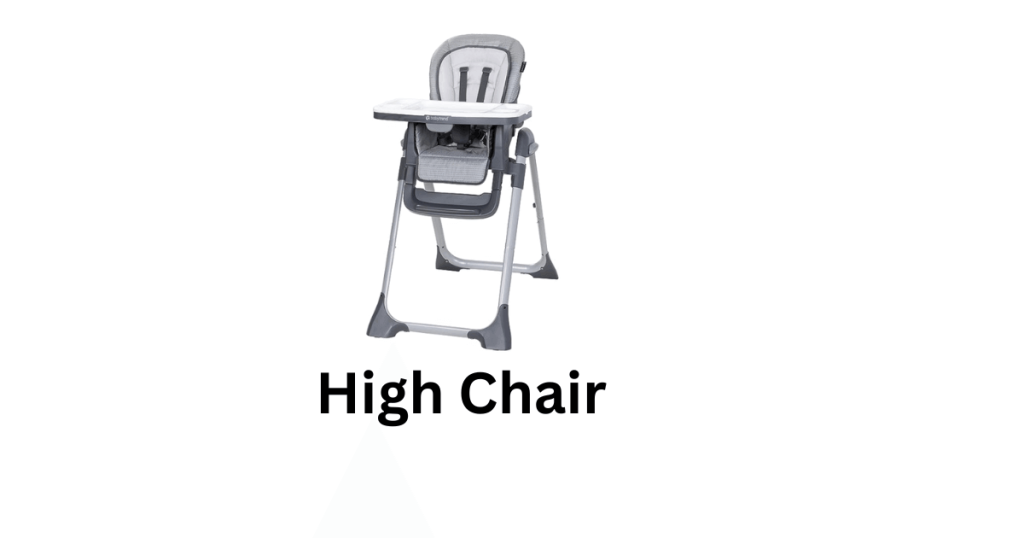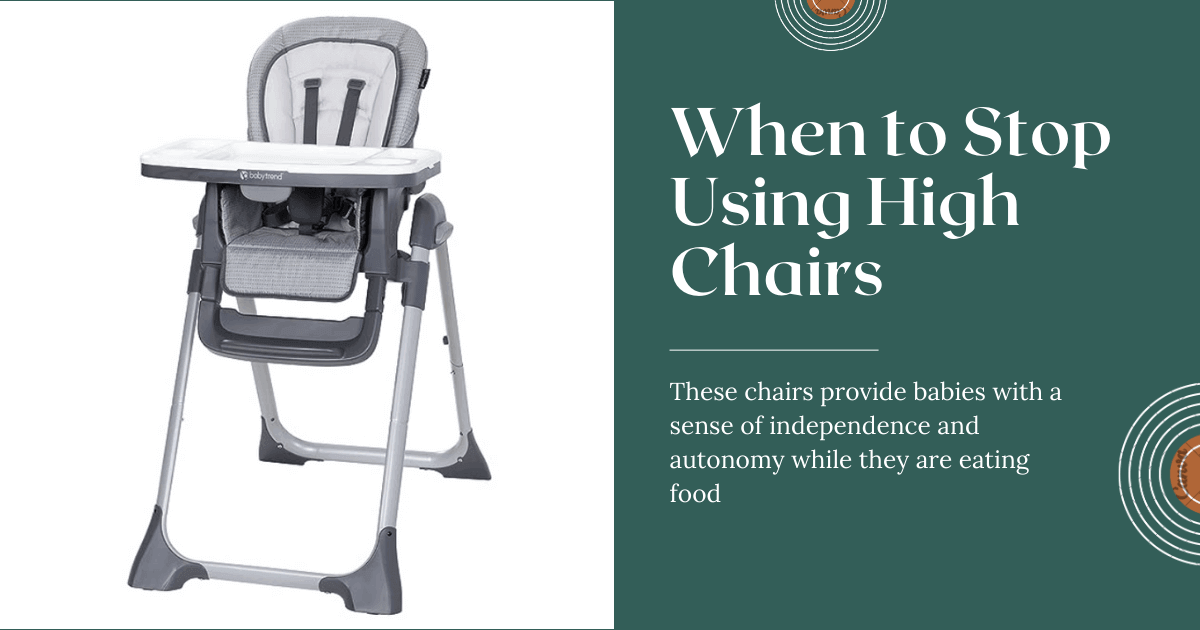Introduction: When to Stop Using High Chair?
High chairs make the journey of toddlers and their parents tremendous. These chairs provide babies with a sense of independence and autonomy while they are eating food. They also provide babies with the autonomous power to explore different kinds of foods and drinks. While these chairs play the most prominent role during childhood, there comes a time when your baby has to leave the chair and learn to eat with other family members at the dining table.
The important factor to consider here is that every child has different developmental milestones, which is why it is difficult to determine the exact age of shifting your baby from a high chair to a regular chair. Despite that, we have tried to guide first-time parents. In this article, we aim to share guidelines related to the transition of a child from a high chair to a regular chair. It has also addressed when to stop using high chair.
Without wasting time, let’s jump into the subject!
When to Stop Using a High Chair?
There is no particular age to stop using high chairs. It varies from child to child and their developmental milestones. Although some babies can sit straight with minimal support at around 1 year of age, they don’t know how to balance themselves on kitchen chairs or regular chairs. If the baby is not healthy enough, he may find it difficult to sit on a dining chair at 3 years of age. On average, a child between 12 months and 2 years of age is ready to leave his high chair and sit independently on a child-sized chair. A 2-year-old cannot be made to sit on a chair that is specifically designed for adults or teenagers.
The simplest way to check if the child is ready for a child-sized chair or not is to observe if he can sit without hopping down or tipping over. If your child doesn’t fall with minimal support, he is ready for a booster seat or a child-sized chair.
Observing the behavior of your child when he is in his high chair can also help you understand whether he wants to be in a high chair or not. For instance, if they look cramped or uncomfortable in a high chair, it is time for you to take them out of the chair. Another popular sign is to check out their eating habits. It is observed that babies who eat solid foods are more likely to sit comfortably on a booster seat than babies who are still on liquids or semi-solid foods.
The third most prominent sign is that a child who is ready for a booster chair doesn’t sit comfortably on a high chair. He is always trying to climb out of the chair and making facial gestures that show discomfort, irritation, or frustration. You don’t need to be an expert to observe these signs. By investing some time, you can surmise what your child needs at that stage.

Why Do Children Feel Uncomfortable on High Chair After a Certain Age?
Every child on this planet reaches a stage when he no longer wants to be in a high chair. The reason is quite clear. Toddlers are at the learning stage. At that point, they want to explore the surroundings, learn new things, and acquire skills. Every moving and static object around them captivates them and forces them to try out things that people around them are doing. For instance, when a 3-year-old baby sees someone standing or walking around him, he will try to jump out of the chair and mimic that person.
At this age, they don’t want to feel physical restrictions. This is why they make an effort to move away from high chairs. Since they cannot tell you in words what they feel, babies try to inform you through their behavior. For instance, by constantly refusing food or throwing food, they tend to tell you that they are frustrated because of the confinement.
With that said, keep one thing in mind: the behavior of every child is different. If your child doesn’t refuse food or exhibit no signs of discomfort or frustration, you don’t need to take him out of a high chair just because he has reached a certain age. As parents, the safety and comfort of a child have to be your priority. Let him enjoy the high chair as long as he wants to.
Why Babies Love High Chairs During Their Childhood?
During the early years of life, every child shares an amicable relationship with a high chair. This is because chairs provide them with enough space to enjoy and explore the food without any assistance. It gives them a sense of independence and achievement. High chairs have other benefits, too. For instance, the majority of chairs come with a bunch of safety features like a point harness, adjustable straps, and locks. These features assure the safety of your child by minimizing the risks of falls or slips.
These chairs provide babies with a chance to explore different food items. Most parents serve them in baby-friendly utensils so that they can have fun while eating. Most chairs also have adjustable height settings that allow parents to change the height of a seat according to the baby’s comfort and safety.
Also, high chairs are sturdy and durable. They don’t occupy much space in the dining area. One of the most important benefits of a high chair is that it also allows your child to communicate, observe, and interact with family members. It improves his communication skills and boosts his self-esteem and confidence. When a child is in a high chair, he learns how to feed himself. This way, his motor skills are polished.
These are only some of the benefits of high chairs for parents and children. Time doesn’t permit us to discuss all the benefits in detail. So, pardon us for that.
Final Statement
High chairs play one of the most prominent roles in shaping the personality of your child and allow him to explore the food and immediate surroundings within the first few months or years on this planet. Despite that, there comes a time when you have to take your child out of high chairs. Want to know when to stop using high chair, then this is a must-read for you. After reading, let us know if you could learn anything new or not!
